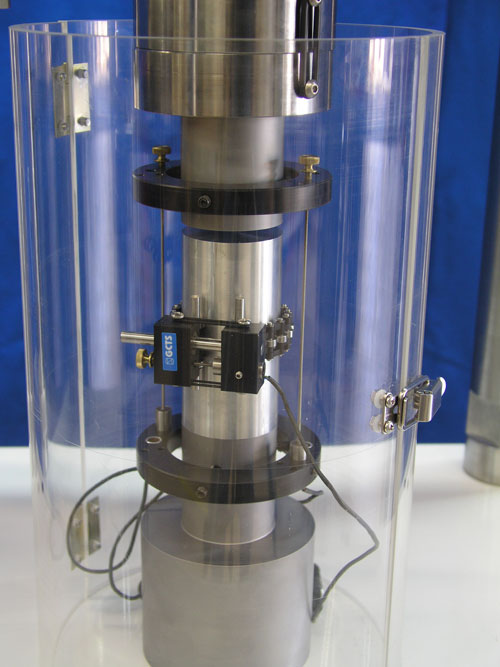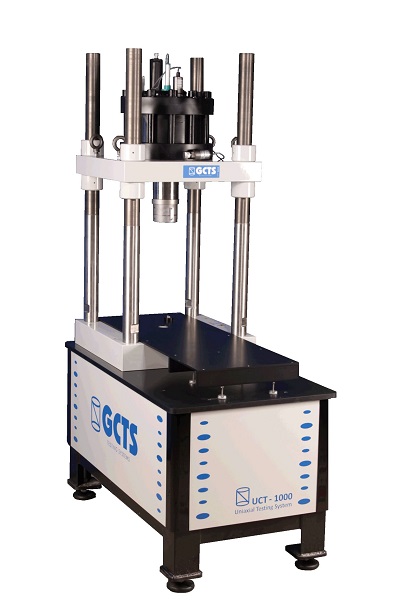The Unconfined Compressive Test is a test performed on rock samples to determine the maximum unconfined compressive strength. This test can be performed on rocks with different moisture contents and different mineral structures and is relatively simple and inexpensive compared to the more advanced Rock Triaxial Test.
A normal unconfined compressive test is usually performed with a fairly simple apparatus, consisting of a device for applying an axial load to the specimen and a device to measure the change in height of the specimen. A typical specimen is loaded onto a bottom plate and the axial load piston is brought into contact with the top of the specimen. An axial load is then applied to cause a constant change in height of the specimen. Once the specimen continues to decrease in height under a constant load or the specimen reaches 15% of its original height, the test is complete, as the specimen has failed.

A typical setup for an unconfined compression test (Courtesy of GCTS)
Typical specimens are larger than 3.3 cm (1.3 in.) in diameter. Specimen height is typically equal to 2 times the diameter, which is done to minimize the friction caused by the application of the load on the top and bottom of the specimen and to prevent the specimen from buckling during the test. A rock sample can be made with any mineral structure, while a soil specimen must be made of a cohesive soil, such as clay, and is unable to be made of a non-cohesive soil, such as sand.
After performing the unconfined compressive test, the maximum load applied to the specimen before failure is equal to the unconfined compressive strength of the rock.
The unconfined compressive test can be used not only for rock specimens, but also for soil specimens. When testing rock specimens, the testing apparatus will need to be able to induce much higher loads than a machine testing soils in order to fail a rock specimen.
The unconfined compression test does not allow for complex testing of many different in situ rock conditions, does not give values for the angle of internal friction or cohesion of a rock, and it does not give the shear strength of a rock. However, it is a much simpler and less expensive apparatus and it does give some basic information about the specimen and can be used to easily test the differences in strength of a specimen with different properties.
Keywords: Unconfined Compressive Test — Unconfined Compression Test — Uniaxial Test — Compression Test — Uniaxial Testing Machine — Testing Instruments — Unconfined Compressive Strength, Cohesive Soils, Fine-grained Soils
© 2016 Geotechnical Consulting and Testing Systems, LLC. All Rights Reserved.

